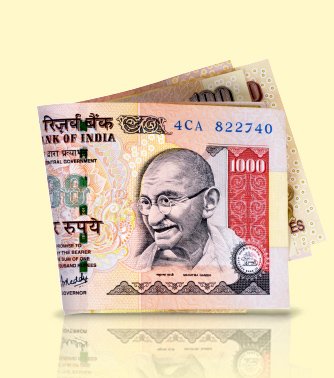Income & Poverty
Income inequality exists when some workers earn more than others. Discrimination, corruption, and differences in the marginal product of labor all lead to this. Would it surprise you to learn that we shouldn’t want everyone to have the same income? Since every person and job is different, compensating differentials in income are perfectly natural!
Economics Majors “Occupy” the 1%
REAL WORLD EXAMPLES
See more examples in the
Corruption in India
Many less developed countries suffer from widespread corruption which can play a large role in income inequality. When corruption is common, people learn that short-run gains can be achieved through manipulation and dishonesty rather than investing in long-term projects based on sound cost-benefit analysis. Recognizing the damage caused by correction has led people to fight back. For example, 5th Pillar, an independent organization, has developed zero rupee notes in India where corruption is rampant. The note is a way for persons who are asked for a bride to indicate that they are not willing to participate. Presenting a zero rupee note lets others know that you refuse to give or take money for an illegal activity.
Winner-Take-All Explains Multi-Million Dollar Salaries
In a winner-take-all market, being a little bit better than your rivals can be worth a tremendous amount. In 2007, baseball player Alex Rodrigues received a ten-year contract worth $27.5M a year. As good as Rodrigues is, he is not ten times better than an average major league player, who makes almost $3M. Nor is he a thousand times better than a typical minor league player, who earns a few thousand dollars a month. In fact, it is hard to tell the difference between major and minor league games, yet major leaguers make hundreds of times more. Winner-take-all has also found its way into corporate America. CEO pay has explored from an average of 35 times the salary of the average American worker in 1975, to 150 by 1990.
Beauty Pays
In research that spans the labor market from the law profession to college teaching, and in countries as different as the United States and China, beauty matters. How much? Beautiful people make as much as ten percent more than persons of average looks, while those whose looks are considered significantly below average can expect their earnings to be as much as 25% below normal.
The influence of beauty on wages can be viewed in two ways—as a compensating differential or as discrimination. Beauty can be a marketable trait that has value in many professions but is can also be discriminatory if employers simply prefer “beautiful” people as employees. In truth, it is often likely a bit of both.
The Grameen Bank
The Grameen Bank gives out very small loans, known as microcredit, to the poor of Bangladesh who are unable to qualify for loans from traditional lenders. The loans are provided without collateral and repayment is based on an honor system. It may sound preposterous, but it works! The Grameen Bank reports a 99% repayment rate and according to one survey, over 50% of the families of Grameen borrowers have crossed the poverty line.
It was a truly innovative idea. To receive a loan, applicants must belong to a five-member group. Once the first two members begin to pay back their loans, the others can get theirs. The bank believes it creates a sense of social responsibility, ensuring that all members will pay back their loans.



